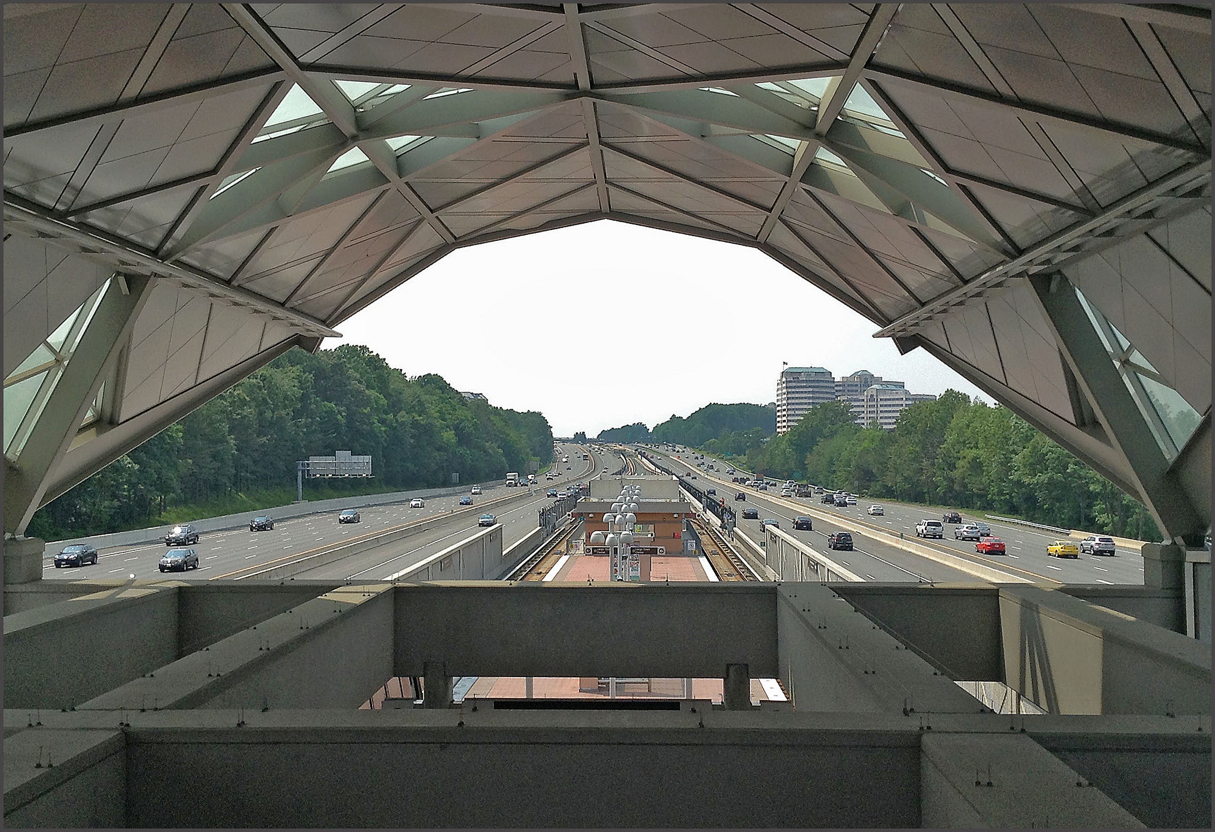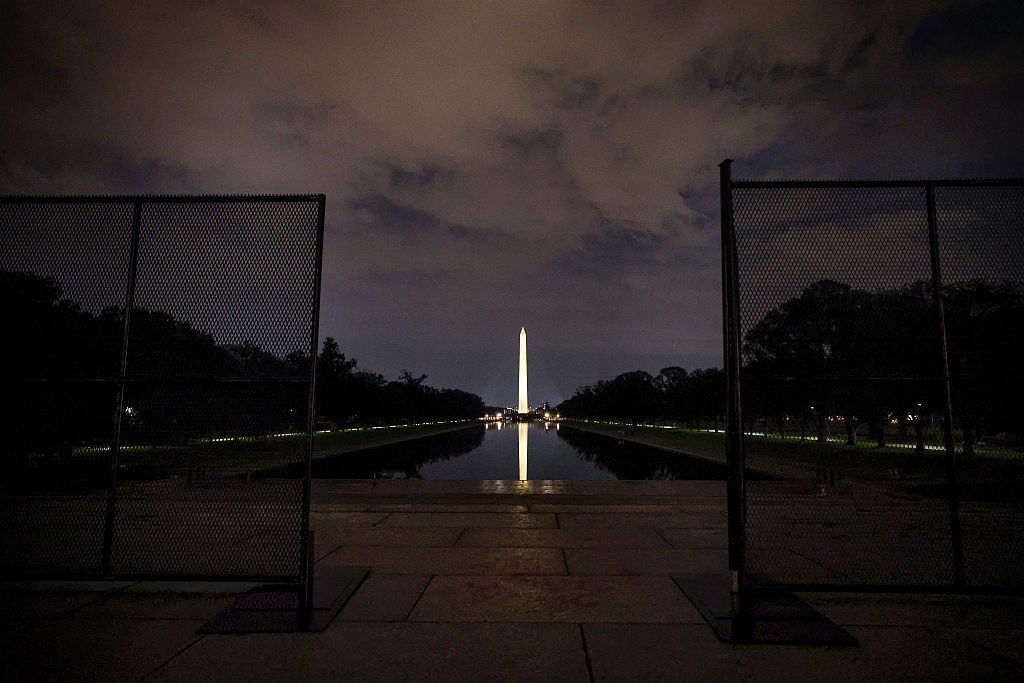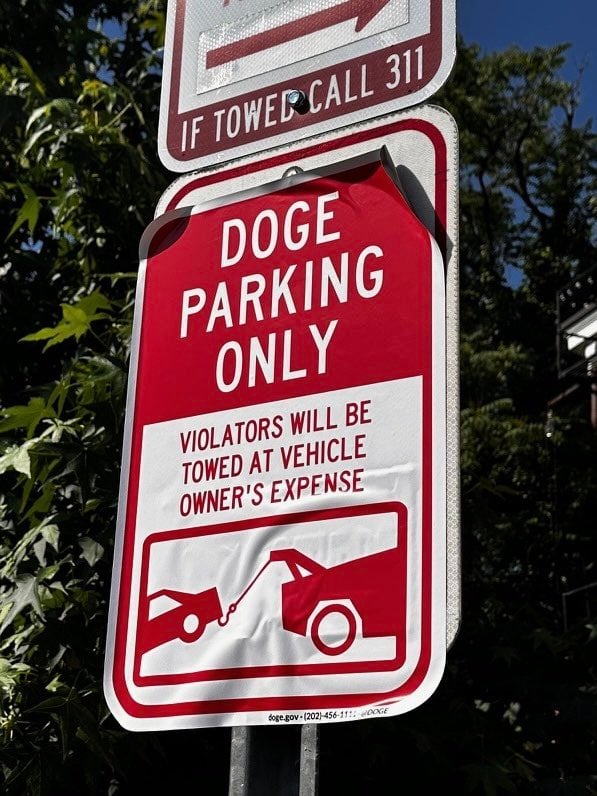Washington Post transportation blogger Fredrick Kunkle has an interesting thought about Metro’s Silver Line today: It “should never have been born.”
In a column today, Kunkle channels the case that perhaps Metro’s current woes—you may have heard about the 10-month schedule of heavy maintenance now underway—might have been avoided if it had just scrapped its plans for the Silver Line altogether and just focused on fixing the rail system that was in already in place.
“The argument goes that Metro’s leadership should have focused instead on overhauling and upgrading the nearly 40-year-old system before adding a new line in Northern Virginia,” Kunkle writes. “The Silver Line was a project either years before its time—or too late. And now there are plenty of people around eager to say, I told you so.”
This sounds indisputable at gut level. Of course Metro should get itself in order before it attempts any big capital project like, say, a 23-mile extension from Falls Church to Dulles International Airport. But that’s also not a very illuminated position for a Metro critic, let alone a transportation reporter.
Kunkle’s argument hinges on criticism from Thomas A. Rubin, a former chief financial officer for the transit system in Los Angeles County, who says forging ahead with the Silver Line, the first phase of which was built between 2009 and 2014, “the worst” decision he’s observed a transit system make.
There’s plenty about Metro to be knocked. Years of deferred maintenance, ballooning labor costs, and sometimes shockingly inadequate safety protocols have contributed to decreasing fares since ridership peaked in 2010, creating a “death spiral” effect. And the first phase of Silver Line, which added four stations to Tysons, was delayed several times, and the second segment, which will reach Dulles, has already been delayed to 2020.
But what Rubin, and apparently Kunkle, fail to do is unstick the Silver Line from Metro’s pre-existing woes. The Silver Line’s construction didn’t divert funds Metro could have spent fixing its five original lines, because it wasn’t done with Metro’s money. The first, $2.9 billion phase was built with $900 million in federal grants, contributions from the Virginia and Fairfax County governments, and the Metropolitan Washington Airports Authority, which collects receipts from the Dulles Toll Road. Funding for the second phase cuts out federal funding and relies on Virginia, Fairfax, Loudoun County, and MWAA.
By comparison, Metro General Manager Paul Wiedefeld said Tuesday his SafeTrack plan, which includes extensive, long-overdue replacements of electrical equipment and rail ties throughout the system, is expected to cost about $60 million. This is not to exonerate Metro for years of missed opportunities to fix its infrastructure; even if the SafeTrack agenda succeeds in eliminating track fires and other incidents that have caused delays, accidents, and casualties, it will still have the feel of an emergency solution.
To be sure, the new route has faults that buttress Kunkle’s argument. The Silver Line’s use of Metro’s tunnel between Rosslyn and Foggy Bottom cut into the frequency at which Blue and Orange line trains can run, and since its June 2014 debut, the Silver Line’s ridership has been well below Metro’s forecasts, peaking at about 17,000 per day—well below a projected 25,000. Its construction, too, was also another exercise in bad workmanship, with the line’s opening delayed several months after the contractor, Bechtel, was ordered to replace hundreds of emergency speakers and improve the electrical equipment.
It also should have been built much sooner. Even in 1962, when Metro’s planning was underway, Tysons Corner was expected to bloom from a dusty intersection outside McLean into a sprawling suburb, says Zachary Schrag, a George Mason University professor whose 2006 book The Great Society Subway is considered the authoritative history of Metro.
But to take Metro’s larger woes out on the Silver Line is a rather blind broadside. Kunkle might not fit in with the train-loving nerds of Greater Greater Washington, but I had to do a double-take on his byline this morning to make sure I wasn’t reading something by Randal O’Toole, the Cato Institute crank who writes frequent jeremiads against public transit. In October, O’Toole wrote in Washington City Paper that Metro should can the unfinished part of the Silver Line and the Purple Line—not actually a Metro project, but who cares about those distinctions when you’re bashing all trains?—”and rededicate those funds to the existing system.”
That’s foolish, though. One can make the case that the federal government should have been investing more in Metro and other urban rail systems over the years—Congress’s current disposition makes that seem unlikely these days—but the bulk of the Silver Line is being paid for by the jurisdictions that it serves. It makes no sense that MWAA or Loudoun County would raise funds for a rail line that doesn’t reach Dulles or make stops in Herndon and Ashburn. These jurisdictions are counting on the Silver Line to kickstart development waves similar to the one that Tysons hopes will transform it from glorified office park to fully fledged city.
It’s true the Silver Line isn’t reaching its ridership marks. Then again, no part of Metro is—fares have dropped at nearly every station since 2011, as the federal transit subsidy dropped below the parking subsidy (effectively creating an incentive to drive) and disenchanted riders sought out new transportation options, like Capital Bikeshare, Uber, and Lyft.
There’s a lot about the Silver Line that could have been handled differently—the timing, the quality of the construction work, the ridership expectations. But ditching it entirely? That would be the greatest error.
















